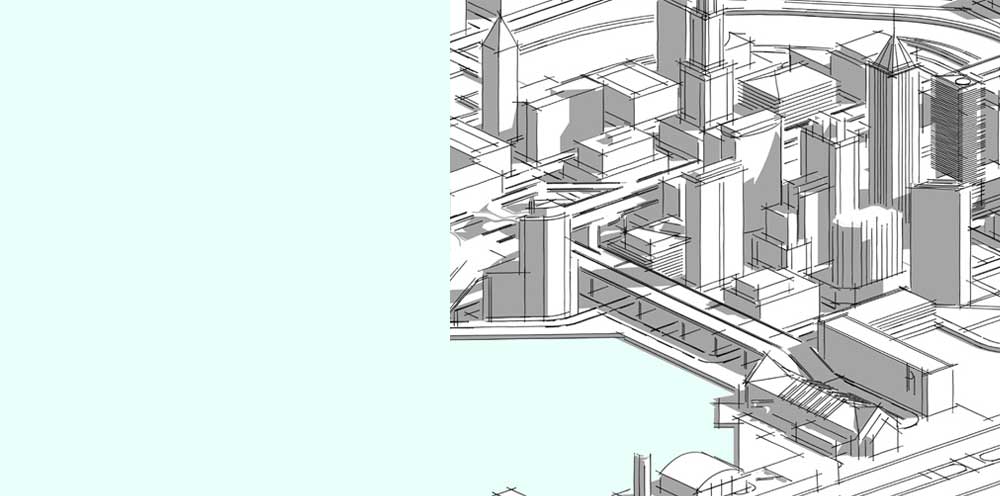designed at - ZERO9
OVERVIEW
The Indian economy is critically driven by housing and real estate. These sectors have been witnessing a golden era with property boom spreading in all directions and it is touching new heights. The Industry experts felt that Indian real estate has huge demand and potential in almost every sector especially commercial, residential, and retail.
The real estate sector in India has come a long way by becoming one of the fastest growing markets in the world. It is not only successfully attracting domestic real estate developers, but foreign investors as well. The growth of the industry is attributed mainly to a large population base, rising income level, and rapid urbanisation.
The sector comprises of four sub-sectors- housing, retail, hospitality, and commercial. While housing contributes to five-six percent of the country’s gross domestic product (GDP), the remaining three sub-sectors are also growing at a rapid pace, meeting the increasing infrastructural needs.
The real estate sector has transformed from being unorganized to a dynamic and organized sector over the past decade. Government policies have been instrumental in providing support after recognizing the need for infrastructure development in order to ensure better standard of living for its citizens. In addition to this, adequate infrastructure forms a prerequisite for sustaining the long-term growth momentum of the economy.
Growing infrastructure requirements from sectors such as education, healthcare and tourism are providing numerous opportunities in the sector. Further, India is going to produce an estimated two million new graduates from various Indian universities every year, creating demand for 100 million square feet of office and industrial space. In addition, presence of a large number of Fortune 500 and other reputed companies will attract more companies to initiate their operational bases in India thus, creating more demand for corporate space.
Further, it sums around 25750 sq.ft. of land per person, which includes forest, hills, rivers, deserts and other non-residential areas where people cannot live. Only 50% of the area is usable in which we can create something for the need of residence. As the land cannot be manufactured and the population is increasing rapidly. The density of population will only increase and will lead to higher value of residential accommodation.
HISTORY
Vantage Factors of TDS Projects Viz-a-Viz National Infrastructure Projects
1) Delhi Mumbai Industrial Corridor in Madhya Pradesh (DMIC)
The Delhi Mumbai Industrial Corridor (DMIC) is being developed by the Government of India as a global investment and manufacturing destination supported by world class infrastructure and enabling policy framework. The DMIC spans across six States of India (Gujarat, Maharashtra, Madhya Pradesh, Haryana, Rajasthan and Uttar Pradesh) comprising total 91 Districts and estimated population of 231 million (as per the data available in 2009). DMIC states have been traditional centres of economic activity. Pithampur-Dhar-Mhow is the first DMIC node being developed in the state of Madhya Pradesh. One of the inherent strengths of this region is the presence of the existing Pithampur industrial area.
Key features of the proposed DMIC Investment Region:
- The Investment Region lies about 25 km south-west of Indore, the largest city and commercial capital of the state
- The site is well connected to the state capital - Bhopal and ports and cities of western India like Mumbai, Ahmadabad by important corridors – National Highway-59 and National Highway-3. Indore Airport connects the region with rest of the country, while rail connectivity is being improved through the Indore-Dahod broad-gauge link to the Dedicated Freight Corridor and Indore – Khandwa to south India
- Total notified area – about 372 sq. km.
- To be developed over a period of 30 years, in three phases of 10 years each
- Combination of manufacturing, services and trading. Rubber & Plastics, Food Processing, Textiles, Electronics, Drugs & Pharmaceuticals, Chemical, Basic Metals and Electrical Engineering are the focus sectors
- Total additional employment generation for over 0.2 million people
- Estimated population in the region will be around 1.2 million by the year 2041
- Project will be implemented with largely private sector participation to harness the latest technology and efficiencies available in the world
- Broad cost estimates for trunk and city infrastructure of the Investment Region is around 300 billion Indian rupees (approximately US$ 7bn)
2) Multimodal Logistics Hub at Pithampur (MMLH)
The proposed Multimodal Logistics Hub (MMLH) in Pithampur industrial area is being developed to meet the growing logistics needs of the existing & proposed industries in the region. The MMLH will improve the logistics integration of the region and will provide direct linkage with the western ports for inward and outward bound, domestic and export-import cargo, thereby greatly increasing the industries' efficiency of operations and helping them to be more competitive. The MMLH will be located within the Pithampur Industrial Area in an area of 182 Ha, along the NH-3 Bypass. Apart from this a number of National and State Highways provide good connectivity to the MMLH with Mumbai and the rest of the country. The proposed Indore-Dahod rail link will connect the facility directly to JNPT and to the ports of Gujarat




